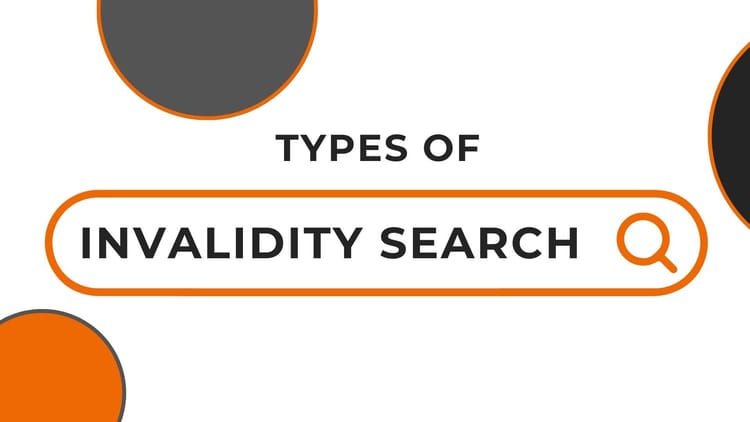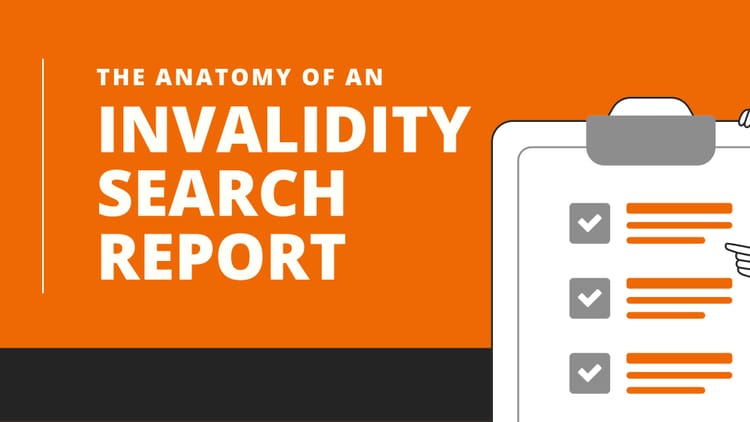What are the Key Steps in Performing an Invalidity Search?
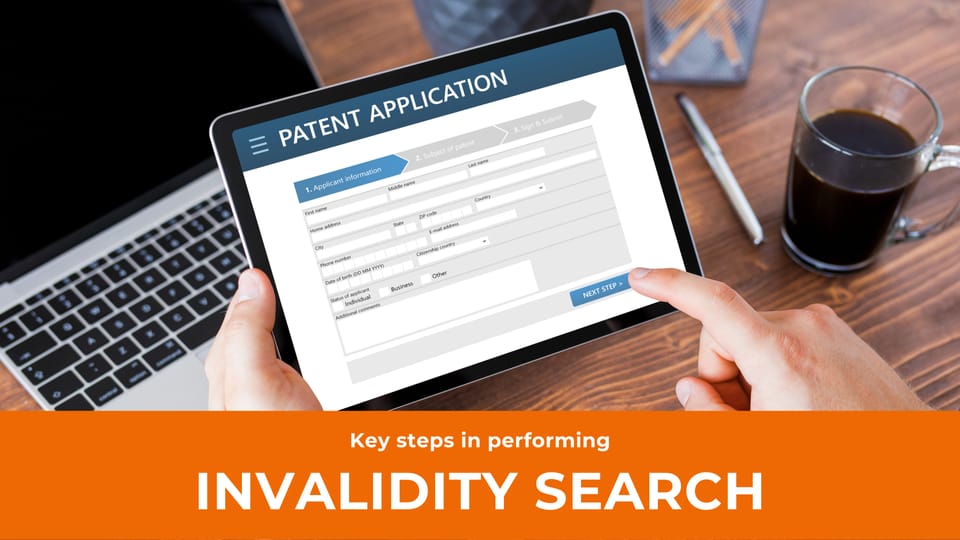
Your bright idea could be worthless.
It's harsh but true. Even the most brilliant innovation means nothing if a patent application falls apart under scrutiny.
The cold, hard truth is that 9 out of 10 patents issued today are vulnerable to invalidity challenges. Shocking, right? Those investments in R&D and legal fees may be well-spent if patents need a robust prior art search.
But don’t despair. With the right invalidity search strategy, you can empower patent applications to withstand the heat.
This guide will illuminate why validity matters and equip you with a research blueprint to fortify patents against attack.
You’ll discover:
- How a poor invalidity search drags down enterprise value
- The anatomy of a rigorous prior art investigation
- Pro tips for executing searches with surgical precision
- Key sources beyond patents to unlock game-changing prior art
- Strategies to integrate findings into a bulletproof application
Whether you're an inventor seeking to cement rights or a business manager aiming to avoid lawsuits, this deep dive will upgrade your IP strategy.
Follow along for the inside track on conducting watertight invalidity searches. Let’s dive in and start future-proofing your next patent.

The Power of Prior Art
Got a big patent pending? Better brace for battle.
With 9 out of 10 patents vulnerable to attacks, failing to perform robust invalidity searches asks for trouble. Don’t learn this lesson the hard way.
Arm your patent with a bulletproof prior art investigation to neutralize threats.
When should red flags fly? Consider:
🚩 Pre-Litigation - Your first line of defense against infringement claims is uncovering art to invalidate the opposition’s patent. Master their weaknesses before you enter the ring.
🚩 M&A - Ensure those attractive assets aren’t high-risk. Validity concerns from overlooked prior art can jeopardize deals. Search thoroughly before signing.
🚩 Renewals - Has new art emerged over time that now challenges your patent’s novelty? Identify vulnerabilities to strengthen renewals.
🚩 Portfolio Management - Pinpoint your strongest and weakest patents through prior art insights. Optimize your IP by doubling down on rockstars.
Consider invalidity searching as running an x-ray on patents to diagnose flaws early. The time and money saved by uncovering issues upfront is invaluable.
Pre-Search Preparations
Preparation is the secret sauce to executing any task successfully. For those familiar with the Boy Scouts motto, "Be Prepared," this is your moment to shine. When it comes to invalidity searches, jumping right into the pool of vast patent databases without a floating device (read: plan) is a recipe for disaster. Here's what you need to do before taking the plunge:
- Decide the Scope: Knowing what you're looking for is essential. Are you targeting patents only within a specific jurisdiction? Or are you planning a comprehensive global search? The scope will guide the search and impact the resources required.
- Hire the Right Experts: Getting professionals on board is best unless you moonlight as a patent law virtuoso. These are people who live and breathe patent databases. Plus, they can help decipher the legalese, which can sometimes be as tricky as reading Shakespeare backward.
- Identify Key Patent Classes and Terms: Each patent is categorized into classes and subclasses based on its technical details. Knowing these can significantly narrow your search, making it more focused and effective. Do your homework to determine which classes are most relevant to your search.
- Preliminary Budgeting: Let’s face it, good things rarely come cheap, and thorough invalidity searches are no exception. Budget considerations can determine how wide or deep your search can go. Always keep an eye on the bottom line.
By paying attention to these foundational aspects, you're setting yourself up for a more organized and fruitful search.
Identifying Sources
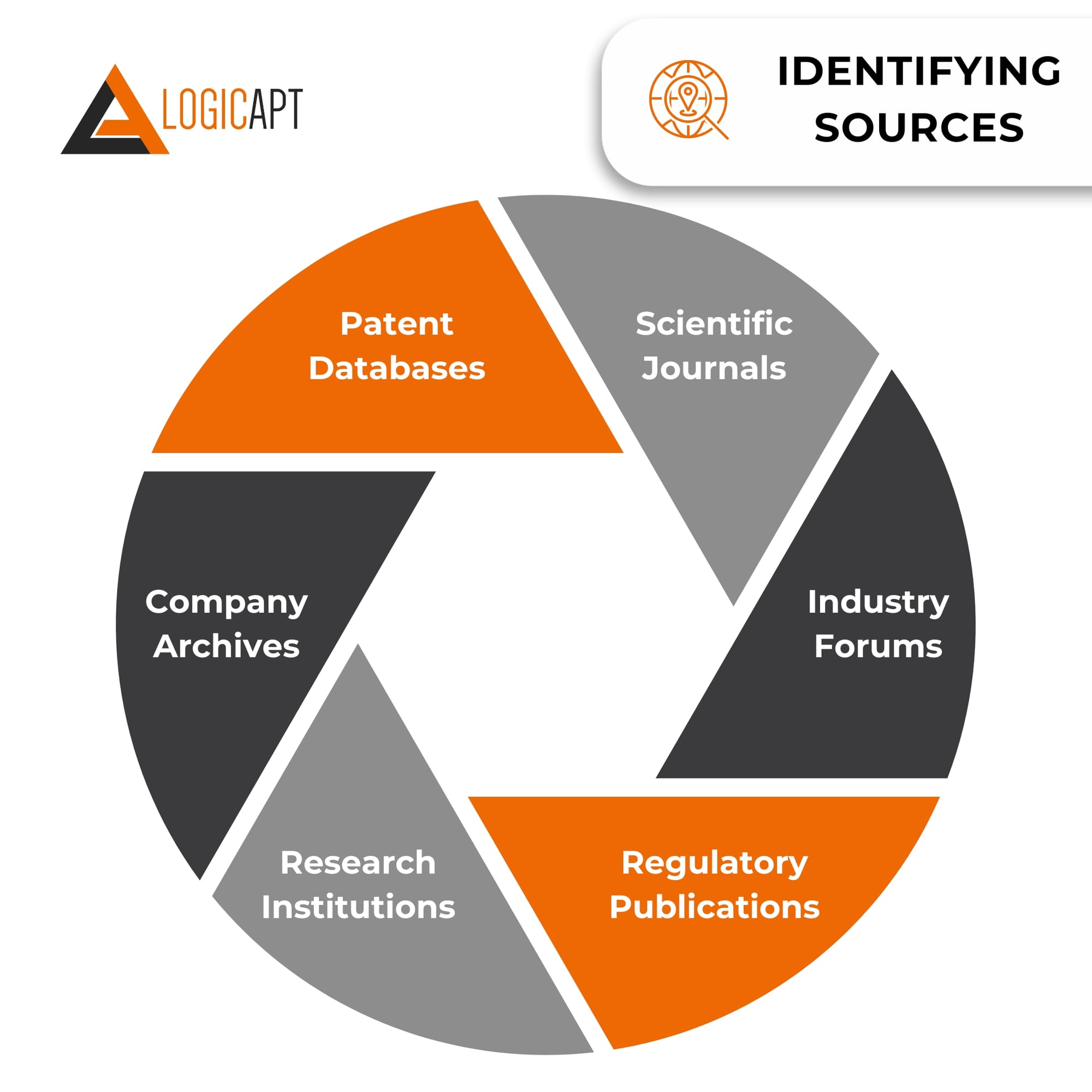
You've set your scope, hired a team of patent search prodigies, and armed yourself with a list of crucial patent classes and terms. But where do you find the proverbial "needle in a haystack"? Thanks to technology, that haystack is now digital and searchable, though no less daunting. In this age of information overload, knowing where to look is half the battle won. So, let's talk about the go-to spots for your invalidity search:
- Patent Databases: Your first stop, almost unavoidably, is patent databases like the United States Patent and Trademark Office (USPTO), the European Patent Office (EPO), or the World Intellectual Property Organization (WIPO). These are the gold mines of patent information, and you'd do well to get familiar with their often cryptic search functionalities.
- Scientific Journals: Patents don't exist in a vacuum; they are part and parcel of broader scientific discourse. Scholarly journals like Nature, Science, or IEEE can offer critical insights and prior art that may not be patented but are nonetheless publicly disclosed.
- Industry Forums and Blogs: Yes, you read that right. Sometimes, a casual mention on an industry-specific forum or blog can become a critical piece of prior art. It's like finding an easter egg in a video game—worth the extra effort.
- Company Archives and Websites: Corporations often publish whitepapers, product manuals, or press releases that contain valuable information. Sift through these to find data that can bolster your invalidity search.
- Universities and Research Institutions: Academic thesis papers and institutional repositories can be goldmines for research still in nascent stages but may have been publicly disclosed.
- Publications from Regulatory Bodies: Documents released by entities like the FDA or the EPA often contain highly researched, credible information that can be cited as prior art.
Conducting the Search
All your pre-search preparations and diligent identification of sources culminate in this step: the search itself. Let's roll up our sleeves, cue up some invigorating background music, and plunge into the depths of intellectual property sleuthing.
- Keyword Selection: Consider this as choosing your sword and shield before heading into battle. Your keywords must be precise yet broad enough to cover all bases. While this may sound like asking a cat to be aloof and affectionate, it's crucial for a successful search. Use synonyms, technical terms, or slang if relevant to your industry.
- Boolean Operators: This isn't a fancy indie band name; Boolean operators are your best friends in streamlining your search. Use "AND," "OR," and "NOT" to combine or exclude keywords. For example, "electric AND vehicle NOT Tesla" would yield results related to electric vehicles but exclude Tesla's patents.
- Filtering Results: Once your keywords and Boolean charms have done their magic, you'll have a list of potential hits. But wait, don't pop the champagne just yet! You need to filter these results based on relevance, date, jurisdiction, and other parameters that align with your initial scope.
- Analyzing Results: Now comes the part where you don the metaphorical lab coat and microscope. Each result must be dissected for relevance and potential as 'invalidating' evidence. Look for claims that resemble the patent in question or any other data termed 'prior art.'
- Tagging and Categorizing: As you move through your potential trove of prior art and relevant documents, tag them. Categories like "Highly Relevant," "Needs Further Analysis," or "Interesting but Useless" can make the subsequent review stages more manageable.
By the end of this stage, you should ideally have a curated list of documents and patents that either fortify your case for invalidity or, conversely, make you rethink your choices. Remember, the aim is not just to find a "smoking gun" but to build a compelling body of evidence that can stand up to legal scrutiny.
Analyzing the Results

Let's delve into the art of analyzing your search results.
- Initial Screening: Conduct a cursory review to remove glaringly irrelevant patents or documents. This step should be a breeze if you've tagged and categorized during your search. Remove anything marked as "Interesting but Useless" and focus on the items in your "Highly Relevant" and "Needs Further Analysis" buckets.
- In-depth Analysis: Now, put on your detective hat and scrutinize each document closely. Look at the claims, specifications, and even the drawings. This step is crucial for understanding how each piece of prior art could invalidate the patent in question. Ask yourself: Does this document disclose the same invention or elements? If yes, you may have found something invaluable.
about similarity and - Legal Relevance: Prior art is about similarity and its legal standing. It should be capable of invalidating a patent claim in a court of law. For this, you should consult legal experts who can interpret the patent language and establish its legal relevance.
- Creating a Synopsis: For each significant document or patent, summarize its essential elements, claims, and how it relates to your patent. This synopsis can be a quick reference for stakeholders who want to avoid wading through the technical jargon.
- Risk Assessment: Finally, use the collected data to assess the risk to your patent. This could be as simple as a confidence percentage or as complex as a SWOT (Strengths, Weaknesses, Opportunities, Threats) analysis.
This stage is the crux of your invalidity search. So take your time, be thorough, and remember: in the world of patents, the devil is often in the details.
Documentation and Reporting
The process may have been arduous, but a poorly documented search is like a movie with a bad ending; it leaves everyone unsatisfied and questioning the point of the whole thing. So, let's ensure your saga has a fitting epilogue, shall we?
- Why Documentation Matters: You can think of documentation as your safety net in this high-wire act of patent law. Good documentation proves due diligence and is a critical resource for future legal scenarios or business decisions. In a nutshell, it’s your story written in stone, ready for the annals of patent history (or at least for the perusal of your legal team).
- Compiling Results: The first step in documentation is to compile all the data and results. Use a structured approach, categorize the prior art found, and document how each piece was analyzed and why it was deemed relevant or irrelevant. In the corporate world, we call this "covering your bases," it's as essential as coffee on a Monday morning.
- Summarizing Findings: Once the data is compiled, summarize your findings. This should include key statistics, such as the number of relevant documents found, the risk assessment, and potential actions or recommendations. It’s your executive summary, the Cliff’s Notes, for those who don’t want to read the book.
- Preparing the Report: Consolidate all this information into a comprehensive invalidity search report. This report should include your methodology, results, summaries, and conclusions and be organized in a manner that's as easy to read as a best-selling novel (or as understandable as your company's leave policy).
Documentation isn't just bureaucratic red tape; it's the cherry on top of your patent invalidity search sundae. So give it the attention it deserves, and who knows? Your well-documented report might be the blockbuster hit you've been aiming for.
Common Pitfalls and How to Avoid Them
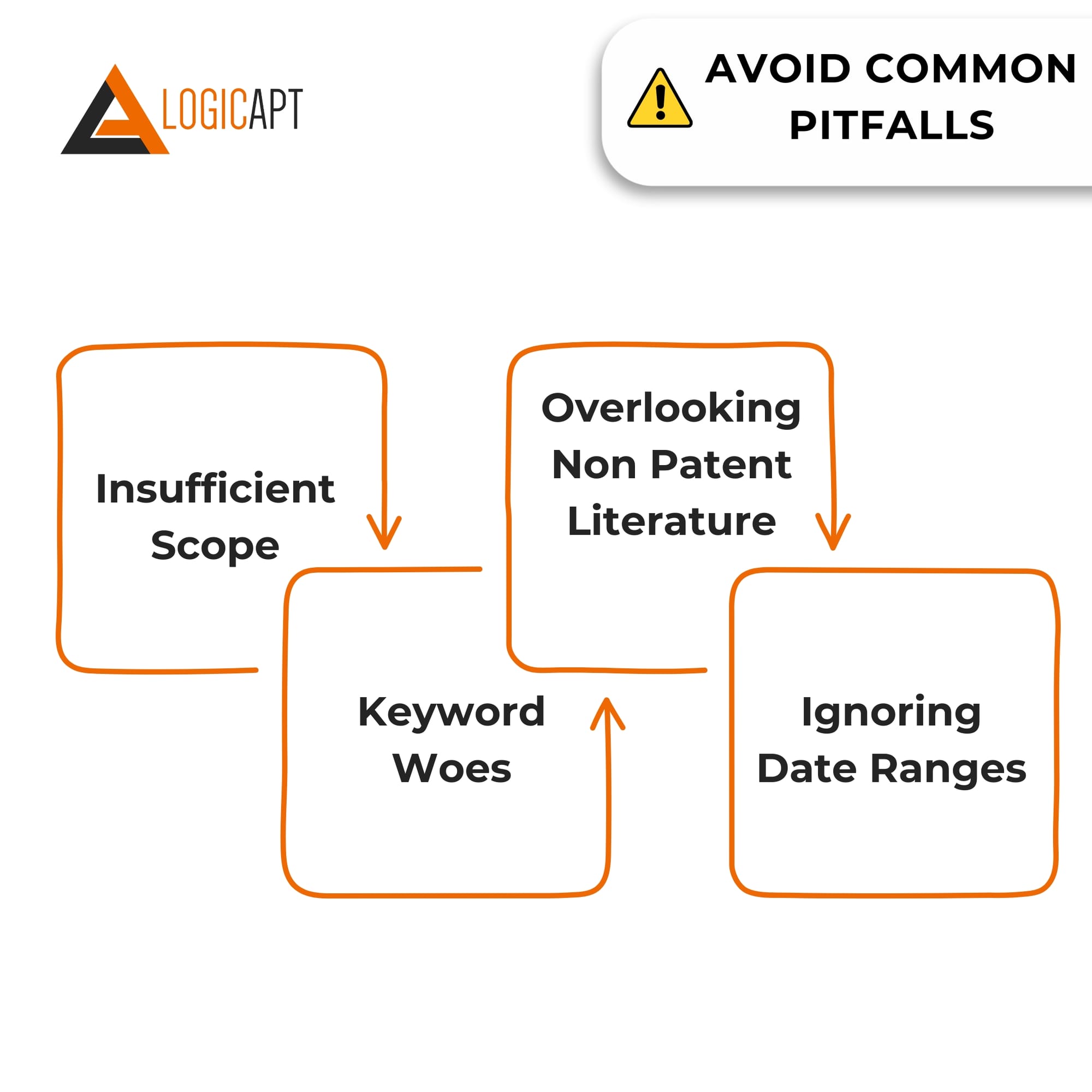
Every endeavor has its potential for error, much like that coworker who insists on using 'reply-all' for every email. However, unlike that email faux pas, the mistakes in an invalidity search can have far-reaching consequences. So let's don our hazard suits and navigate this minefield together, shall we?
- Insufficient Scope: The first mistake many make is limiting the scope of the search. It's akin to shopping at one store and thinking you've seen all there is to offer. An insufficient scope may prevent you from missing out on crucial prior art. Ensure you've consulted multiple data sources and included direct and tangential technology areas to dodge this.
- Overlooking Non-Patent Literature: Ah, the allure of databases chock-full of patents can be overwhelming. But patents aren't the whole story. Scientific journals, articles, and even online forums can offer a goldmine of information. So don't put all your eggs in the patent basket; diversify those sources.
- Keyword Woes: Much like a failed Google search can lead you down the rabbit hole of irrelevant information, poor keyword selection can derail your invalidity search. Avoid this by researching and refining your keyword list, perhaps even consulting experts for industry-specific terms.
- Ignoring Date Ranges: Imagine you find the perfect piece of prior art, only to realize it was published a week after the patent was filed. The chronology matters! Always filter your results based on relevant date ranges to ensure the validity of your findings.
It's natural to stumble on the path to enlightenment. However, with these cautionary tales and antidotes, you're less likely to fall into these common traps. Think of it as your cheat sheet, ensuring you come out of this process looking more like a patent search Jedi than a padawan.
Case Studies
Consider this the 'do's and don'ts' you wish your college textbooks came with.
Case Study 1: The Well-Executed Search
Scenario: Company A was considering acquiring Company B's patent portfolio in the renewable energy sector. They initiated an invalidity search to assess the value and risk involved.
Good Practices Observed:
- Comprehensive Scope: Company A delved into patent databases and accessed scientific journals and relevant trade publications.
- Expert Consultation: They sought advice from industry experts to refine the keyword list, ensuring a targeted search.
- Detailed Reporting: All findings were meticulously documented, leading to a comprehensive invalidity report that informed their acquisition decision.
Outcome: Company A successfully acquired Company B's portfolio at a valuation that reflected the actual worth and risk involved, thanks to a well-executed invalidity search. It was a win-win or a 'pat-win.'
Case Study 2: The Not-So-Great Search
Scenario: Independent Inventor X thought he had an innovative idea for an IoT (Internet of Things) device. Confident and eager, he searched for invalidity but skimmed over the process.
Poor Practices Observed:
- Limited Scope: He only checked Google Patents, assuming that was sufficient. It's like shopping for a car and only visiting one dealership!
- Lack of Expertise: No industry experts were consulted for keyword selection, leading to a poor search query.
- No Documentation: The findings needed to be correctly recorded, making it difficult to reference or build upon later.
Outcome: Inventor X filed his patent only to face infringement issues a year later, forcing him to withdraw his application. Unfortunately, his dream of being the next big IoT mogul was invalidated—pun intended.
The Role of Technology
Ah, technology—our ever-loyal, sometimes frustrating, and increasingly more thoughtful friend. Could you imagine performing invalidity searches manually in a world saturated with over a million patents? Neither can we. Let's delve into how technology isn't just a nice-to-have but a got-to-have in this field.
Current Technologies:
- Database Search Engines: Advanced databases like PatBase or Derwent Innovation offer complex search functionalities that go far beyond the capabilities of a basic Google Patents search. They allow you to sift through tons of data using multi-layered search criteria. Think of this as your search on steroids.
- Natural Language Processing (NLP): Technologies like NLP help in semantic search, making the invalidity search process more intuitive and accurate. With NLP, you don't have to be a keyword genius; the machine understands context.
- Machine Learning Algorithms: Some platforms are so advanced they 'learn' from past searches, constantly improving search outcomes and reducing false positives. Yes, machines are learning; let's hope they don't outsmart us!
A Look into the Future:
- AI-Driven Analytics: As AI evolves, the analytics side of invalidity searches will likely see a revolutionary change. Imagine AI programs predicting the likelihood of a patent being invalidated based on past cases and current law, making your decision-making process exponentially easier.
- Blockchain for Verification: While it's still in a nascent stage, blockchain could play a role in quickly verifying the validity of existing patents, reducing the steps involved in your invalidity search.
Conclusion
If you've stayed with us this far, you're serious about mastering the art of invalidity searches—and for good reason. Let's do a quick recap:
- The Importance of the Search: Whether you're a business eyeing a merger or an inventor about to enter a litigation battle, knowing how to execute an invalidity search is invaluable.
- Pre-Search Preparations: Defining your scope and objectives upfront is like mapping out your treasure hunt—don't start digging without a plan.
- Identifying Sources and Conducting the Search: Picking the right databases and deploying the correct search terms is the bread and butter of your search operation. No shortcuts here.
- Analyzing the Results: Once you've found the 'gold,' knowing how to assess it is key. Interpretation can be the difference between an asset and a liability.
- Documentation and Reporting: You wouldn't make grandma's famous cookie recipe without jotting it down, would you? Documentation ensures your hard work can be replicated and verified.
- Common Pitfalls: Beware common mistakes, like underestimating the scope or overlooking critical databases. Avoiding pitfalls can be as important as following best practices.
- The Role of Technology: Embrace tech like it's your nerdy best friend. It makes your job easier, more accurate, and future-ready.
Your patent might be your business's most valuable asset. Treat it as such by conducting thorough, precise, and tech-aided invalidity searches. This isn't just a one-off chore; it's a strategic exercise that can save you time, money, and legal woes. Happy searching!

References & Additional Resources
We've curated a shortlist of academic papers, books, and online resources for those who want to dig even deeper into the riveting world of invalidity searches. Consider it your intellectual treasure trove:
- "Patent Law Essentials: A Concise Guide" by Alan L. Durham
- "Invalidity and Noninfringement Opinions in Intellectual Property" – Journal of Intellectual Property Law
- "The Search for Prior Art" – U.S. Patent and Trademark Office's Guidelines
- The European Patent Office’s Guide on Searching for Patents

